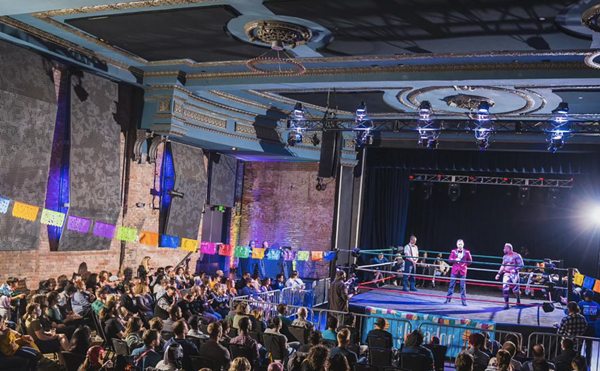Before she was an urban exploring, photo journalizing, portrait-capturing woman, Vanessa Miller was gettin' down and nerdy in Wayne State University's darkest rooms. She's but a couple years removed from her college days, so who better to query about separating true sensitivity and beauty from the cliché?
Metro Times: On art school chestnuts and truisms: What kinds of clichés did you learn to identify?
Vanessa Miller: Well, I knew that going to art school for photography was a cliché itself. However, most beginning art students, including myself when I was younger, are self-absorbed and stuck on the idea that art is only made for aesthetic purposes. Of course, there's the other side who go for shock value, likely inspired by Andres Serrano's "Piss Christ." Because of this, there's lots of mindless work being made in the halls of art schools: photographs of cats, dogs or family members and silly re-appropriations of famous images, like adaptations of Grant Wood's "American Gothic" painting. Then there are the seemingly vintage images taken with Polaroid, Lomo and Holga cameras. You'll see a lot of party pictures and live band shots. Any time someone can capture streams of light, they'll do it, and if they have wide-angle or fish-eye lenses, they'll abuse them. In Detroit, you get a lot of photos of abandoned, distressed, derelict buildings — and people.
MT: Are these clichés meant to be avoided or pandered to?
Miller: Some of them are necessary for the learning process, and some of them are just guilty pleasures. Even now, I cannot help from indulging in some of them. Your work doesn't become unique in any medium until you realize why you are doing it. Until you can convince someone why your version of "American Gothic" is the best, beyond being technically perfect, you're still a noob. A friend of mine uses 24-inch-by-30-inch sheets of paper for these tiny silkscreen prints, and I hate that wasted material, but he can explain why he does it, and he is stubborn as all fuck. So now, secretly, I love it.
MT: At some point, everyone will snap the moody person gazing into the distance, cigarette smoke twisting into the air, in black and white. How much of that did you see?
Miller: Oh, man, the monotony that is the brooding single ray of light, barely dressed, black-and-white photograph is experiencing quite the revival these days. We've moved on from the high-angle-emo-FaceSpace self-portraits and have now, under the influence of basically anyone who shoots for Vice Magazine or American Apparel (Ryan Mcginley, Terry Richardson and Dash Snow) moved onto the cross-processed color film photographs of kids wearing close to nothing, looking despondent or confused, doing drugs or doing nothing at all. I love those photographers and their style, but the amount of emulation going on has made it the new black-and-white cigarette-smoking pic you're talking about. Just wait, you'll see.
MT: Shooting Detroit's decay is played-out at this point; and there are artful ways and there are exploitative ways to go about it. Did you run into that at all?
Miller: It is cliché, however I don't blame people for getting into it. When you're on the freeway and traffic is stopped because of an accident, you'll sit in your car and complain about the gawkers, but, as you drive by, don't pretend you weren't looking for a drop of blood or a shattered window. When people first come to Detroit, some parts of the city seem like a car wreck — it's the same thing. The point is that if you walk into an abandoned building and feel crippled by its beauty and compelled to photograph it, do so with the knowledge that you were not the first. Urban explorers have a code of ethics: take only photographs, leave only footsteps. With the New York Times, CNN, and even Vice Magazine running stories about our urban prairies, I wonder what subject will be cliché next for Detroit photography.
MT: Top-notch equipment for top-notch work?
Miller: Two-million-dollar pencils will not make you draw better, and an $18 million computer will not make you a better designer, but you probably won't shoot the cover of Rolling Stone with a Canon Rebel or Nikon D60. But learning on not-so-awesome equipment teaches you to roll with the punches, makes you more skilled at your craft, forces you to be more creative.
MT: What clichés should be avoided at all costs?
Vanessa Miller: Taking portraits of yourself or anyone else naked, any sort of attempted fashion shoot or band promos with the Renaissance Center in the background or inside an abandoned building.
Travis R. Wright is arts and culture editor of Metro Times. Send comments to [email protected]




